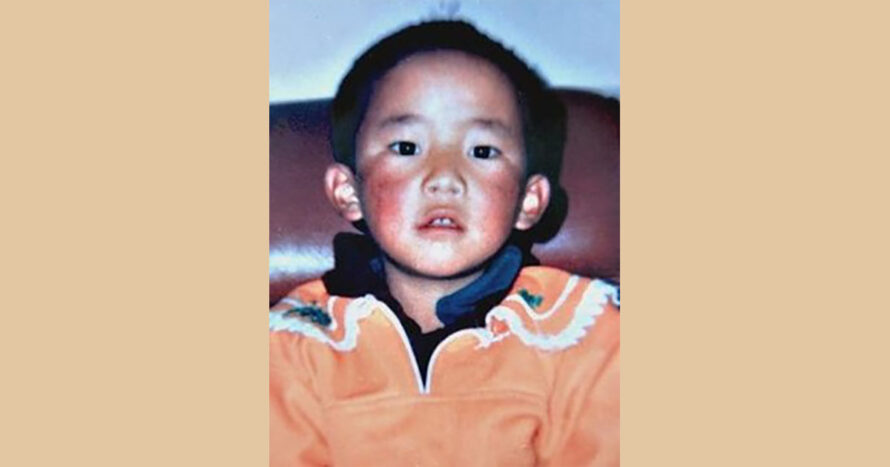The 11th Panchen Lama, Gedhun Choekyi Nyima, turns 33 on 25 April 2022, but he has not been seen in public since his abduction 27 years ago at the tender age of 6. Nor has the Chinese government provided proof that he remains living.
During this year’s birthday week, Zeekgyab Rinpoche, abbot of Tashi Lhunpo Monastery, the traditional seat of the Panchen Lama, is visiting Washington, DC. The International Campaign for Tibet joins the abbot’s call for concrete evidence of the Panchen Lama’s health and location and the restoration of his right to take his place as a religious leader of the Tibetan people.
After the 10th Panchen Lama’s death in 1989, Chinese authorities interfered in identifying the next Panchen Lama, realizing it was a potent tactic in its mission of control. China asserted that the reincarnation would be subject to approval by the atheist, communist regime. A propaganda blitz ensued that falsely claimed that the selection of the Panchen Lama and Dalai Lama reincarnations had always been the prerogative of imperial Chinese governments.

Laying the foundation for their long-term objective to manipulate the recognition of the next Dalai Lama in the future, Chinese authorities subsequently installed their own Panchen Lama in a hastily organized ceremony directed by Communist officials.
The 11th Panchen Lama is now well beyond the conventional age of assuming his spiritual duties. The International Campaign for Tibet hopes governments, parliaments, NGOs and UN human rights mechanisms will continue concerted efforts to obtain concrete evidence of the health and location of the Panchen Lama and his family. ICT also urges Chinese authorities to respond positively to the appeals already made by the UN and governments, as well as by Tibetan Buddhists, to permit the Panchen Lama to live a genuinely free and normal life.
To this day, China’s repressive policies in Tibet have led to executions, torture, imprisonment, the destruction of religious institutions, political indoctrination, the expulsion of monks and nuns from monasteries and nunneries, the banning of religious ceremonies, restrictions on the numbers of monks in monasteries and the extreme disruption of the religious practices of average Tibetans.
The Chinese Communist Party’s willingness to forcibly disappear a child is a stark reminder of its cold-blooded strategy to dismantle the very heart of Tibetan religion and cultural identity. Such extreme measures should never be tolerated by the international community, and all necessary pressure must be applied to free the Panchen Lama and other prisoners of conscience in Tibet.